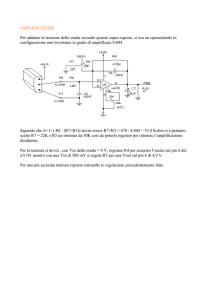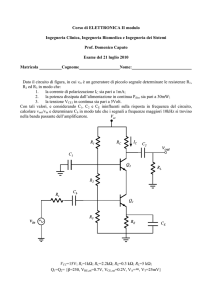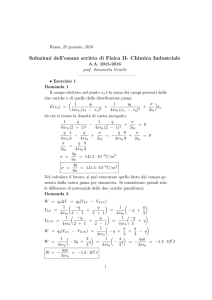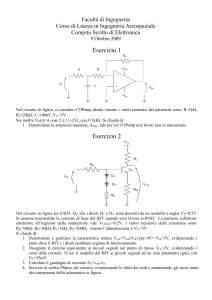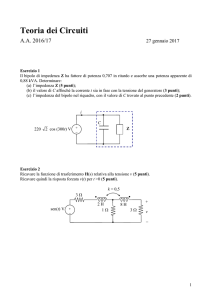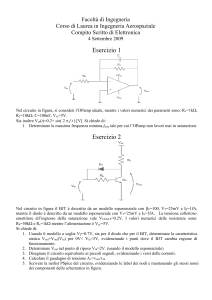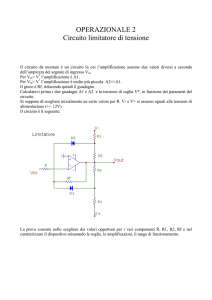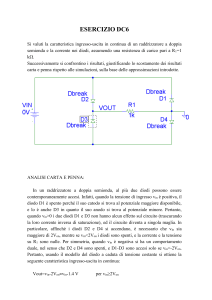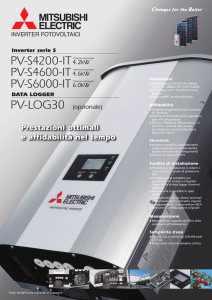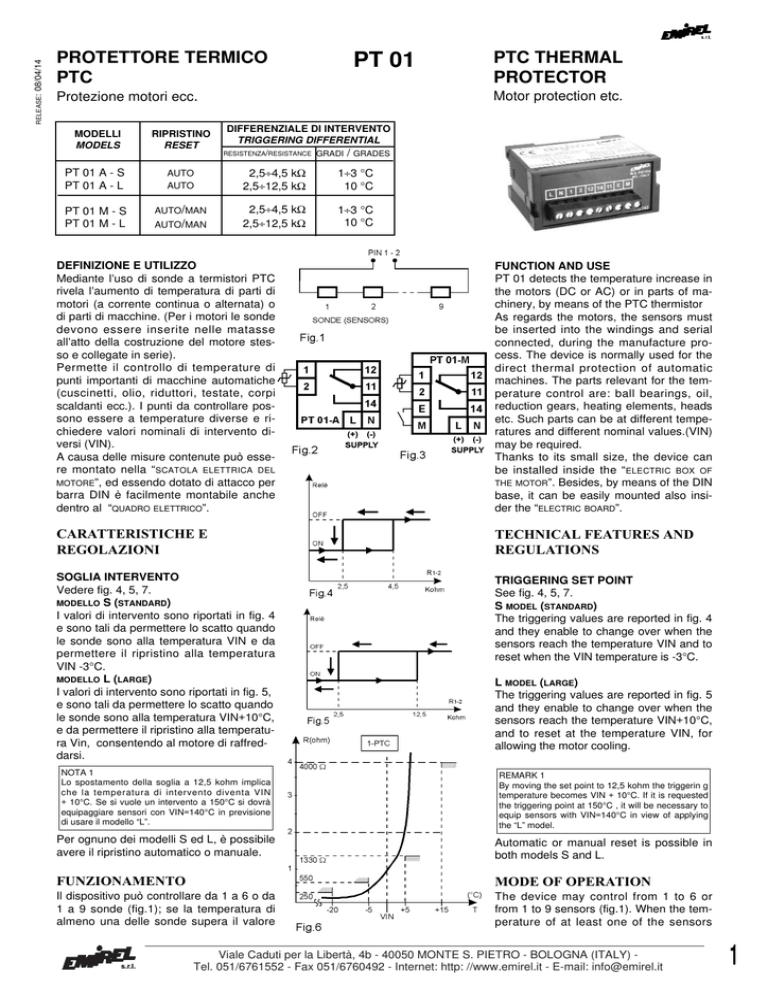
08/04/14
RELEASE:
PROTETTORE TERMICO
PTC
PT 01
Motor protection etc.
Protezione motori ecc.
MODELLI
MODELS
RIPRISTINO
RESET
DIFFERENZIALE DI INTERVENTO
TRIGGERING DIFFERENTIAL
RESISTENZA/RESISTANCE
GRADI
/ GRADES
PT 01 A - S
PT 01 A - L
AUTO
AUTO
2,5÷4,5 kΩ
2,5÷12,5 kΩ
1÷3 °C
10 °C
PT 01 M - S
PT 01 M - L
AUTO/MAN
2,5÷4,5 kΩ
2,5÷12,5 kΩ
1÷3 °C
10 °C
AUTO/MAN
PTC THERMAL
PROTECTOR
DEFINIZIONE E UTILIZZO
Mediante l’uso di sonde a termistori PTC
rivela l’aumento di temperatura di parti di
motori (a corrente continua o alternata) o
di parti di macchine. (Per i motori le sonde
devono essere inserite nelle matasse
all’atto della costruzione del motore stesso e collegate in serie).
Permette il controllo di temperature di
punti importanti di macchine automatiche
(cuscinetti, olio, riduttori, testate, corpi
scaldanti ecc.). I punti da controllare possono essere a temperature diverse e richiedere valori nominali di intervento diversi (VIN).
A causa delle misure contenute può essere montato nella “SCATOLA ELETTRICA DEL
MOTORE”, ed essendo dotato di attacco per
barra DIN è facilmente montabile anche
dentro al “QUADRO ELETTRICO”.
FUNCTION AND USE
PT 01 detects the temperature increase in
the motors (DC or AC) or in parts of machinery, by means of the PTC thermistor
As regards the motors, the sensors must
be inserted into the windings and serial
connected, during the manufacture process. The device is normally used for the
direct thermal protection of automatic
machines. The parts relevant for the temperature control are: ball bearings, oil,
reduction gears, heating elements, heads
etc. Such parts can be at different temperatures and different nominal values.(VIN)
may be required.
Thanks to its small size, the device can
be installed inside the “ELECTRIC BOX OF
THE MOTOR”. Besides, by means of the DIN
base, it can be easily mounted also insider the “ELECTRIC BOARD”.
CARATTERISTICHE E
REGOLAZIONI
TECHNICAL FEATURES AND
REGULATIONS
SOGLIA INTERVENTO
Vedere fig. 4, 5, 7.
MODELLO S (STANDARD)
I valori di intervento sono riportati in fig. 4
e sono tali da permettere lo scatto quando
le sonde sono alla temperatura VIN e da
permettere il ripristino alla temperatura
VIN -3°C.
MODELLO L (LARGE)
I valori di intervento sono riportati in fig. 5,
e sono tali da permettere lo scatto quando
le sonde sono alla temperatura VIN+10°C,
e da permettere il ripristino alla temperatura Vin, consentendo al motore di raffreddarsi.
TRIGGERING SET POINT
See fig. 4, 5, 7.
S MODEL (STANDARD)
The triggering values are reported in fig. 4
and they enable to change over when the
sensors reach the temperature VIN and to
reset when the VIN temperature is -3°C.
NOTA 1
Lo spostamento della soglia a 12,5 kohm implica
che la temperatura di intervento diventa VIN
+ 10°C. Se si vuole un intervento a 150°C si dovrà
equipaggiare sensori con VIN=140°C in previsione
di usare il modello “L”.
REMARK 1
By moving the set point to 12,5 kohm the triggerin g
temperature becomes VIN + 10°C. If it is requested
the triggering point at 150°C , it will be necessary to
equip sensors with VIN=140°C in view of applying
the “L” model.
Per ognuno dei modelli S ed L, è possibile
avere il ripristino automatico o manuale.
Automatic or manual reset is possible in
both models S and L.
FUNZIONAMENTO
MODE OF OPERATION
Il dispositivo può controllare da 1 a 6 o da
1 a 9 sonde (fig.1); se la temperatura di
almeno una delle sonde supera il valore
The device may control from 1 to 6 or
from 1 to 9 sensors (fig.1). When the temperature of at least one of the sensors
L MODEL (LARGE)
The triggering values are reported in fig. 5
and they enable to change over when the
sensors reach the temperature VIN+10°C,
and to reset at the temperature VIN, for
allowing the motor cooling.
Viale Caduti per la Libertà, 4b - 40050 MONTE S. PIETRO - BOLOGNA (ITALY) Tel. 051/6761552 - Fax 051/6760492 - Internet: http: //www.emirel.it - E-mail: [email protected]
1
nominale di intervento (VIN) il dispositivo
scatta.
In caso di rottura di un conduttore delle
sonde, il dispositivo segnala ALLARME.
overcomes the triggering nominal value
(VIN) the device changes over.
The device changes over also in case of
“broken sensor”.
Caratteristiche delle sonde
Le sonde a termistore PTC sono caratterizzate dal valore di intervento nominale
(VIN), cioè il valore di temperatura in corrispondenza del quale aumentano il valore della loro resistenza.
In fig.6 è riportata la “maschera” entro cui
deve essere la curva R-T di ogni sensore
PTC. Normalmente i PTC vengono costruiti con VIN da 70°C a 180°C (con
intervalli di 10°C)
In fig.7 è riportata la “maschera” entro cui
deve essere la curva R-T di 9 sonde PTC
in serie. Se le 9 sonde sono uguali, il VIN
sarà quello delle sonde; se le sonde
hanno diverso VIN il dispositivo scatterà
quando almeno una sonda avrà superato
il proprio VIN, indipendentemente da
quanto sta succedendo alle altre sonde. Il
dispositivo può quindi tenere sotto controllo contemporaneamente punti con temperature diverse.
Characteristics of the sensors
The PTC sensors are featured by VIN
(nominal triggering temperature), that is
the temperature value in correspondence
of which they increase the value of their
resistance.
Fig6 shows the frame which must contain
the curve R-T of each PTC sensor.
Generally the PTC sensors are manufactured with VIN varying from 70°C to
180°C, with steps of 10°C.
Fig.7 shows the frame which must contain the curve R-T of 9 PTC sensors in
series. If the 9 sensors are equal, VIN
value will be the same of the sensors; if
the 9 sensors have not the same VIN, the
device triggers when at least one sensor
overcomes its own VIN, regardless of
what is happening to the other sensors.
Therefore the device is able to perform a
simultaneous control of many points at
different temperatures.
TARATURA: nessuna.
SETTING: no setting.
RIPRISTINO
PT 01 A: Automatico.
PT 01 M: Automatico se E-M sono cavallottati.
Manuale, con la chiusura
momentanea di E-M.
RESET
PT 01 A: Automatic.
PT 01 M: Automatic if E-M link is made.
Manual, by closing for a short
time E- M.
POSITIVE SAFETY
The internal relay is normally ON and it
goes OFF in case of alarm.
SICUREZZA INTRINSECA
Il relè è normalmente ON e va OFF in
caso di intervento.
INSTALLATION
INSTALLAZIONE
Follow the wirings as per fig.2 e 3.
Eseguire i collegamenti secondo fig.2 e 3.
COLLEGAMENTI
Mediante morsettiera a vite (13A-250Vac)
IP 20
INGRESSO
pin 1-2 - Massima tensione: 7Vdc, per
sensori PTC (DIN 44081).
USCITA
10A-230Vac - carico resistivo
11-12 NC
Condizione del relé
11-14 NA
non alimentato
NOTA 1
CONNECTIONS
Quando il dispositivo è alimentato in CC, By screw terminal (13A-250Vac)- IP 20
non c’è isolamento fra il sensore e l’alimentazione.
INPUT
pin 1-2 - Max voltage: 7Vdc, for PTC senREMARK 1
When the device is DC supplied, there is sors (DIN 44081).
no insulation between sensor and supply.
OUTPUT
10A-230Vac - resistive load
11-12 NC
device not supplied
11-14 NO
or in alarm
TEMP. DI FUNZIONAMENTO: - 30÷70°C
PESO: kg 0,100
ALIMENTAZIONE
WORKING TEMPERATURE: - 30÷70°C
2VA - 50÷60Hz - Tolleranza -10% ÷ +10% WEIGHT: kg 0,100
L - N: 230Vac o 115Vac o 24Vac o
24Vdc o 12Vdc
DIMENSIONI: 67x32x60 mm con
attacco per guida DIN e accessori
M 11 per montaggio a parete.
Le dimensioni contenute permettono l’installazione nella
ALIMENTAZIONE
2VA - 50÷60Hz - Tolerance -10% ÷ +10%
L - N: 230Vac or 115Vac or 24Vac or
24Vdc or 12Vdc
SIZE
67x32x60 mm for DIN rail.
By means of M 11 it can be fixed to wall.
Thanks to the reduced dimensions,
the device can be installed inside
the motor electric box.
scatola elettrica del motore.
2
Viale Caduti per la Libertà, 4b - 40050 MONTE S. PIETRO - BOLOGNA (ITALY)
Tel. 051/6761552 - Fax 051/6760492 - Internet: http: //www.emirel.it - E-mail: [email protected]

